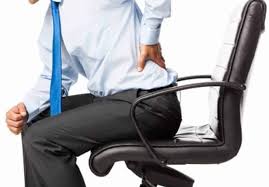Written by; Beth Tobin (Bach. Ex Sci- Current)
In short, the answer is NO, but also YES…..
Research indicates that the risk of all-cause mortality from sedentary behaviour is around 1.22 (hazard ratio), whereas the risk from smoking is 2.8 for men, and 2.76 for women (1).
However, captions like these trivialize the risks attached to smoking, and make it easier to ignore the risks attached to prolonged sitting.
The Effects of Prolonged Sitting
These are some of the physiological and biomechanical effects of prolonged sitting.
- Turns off the muscles and nerves from the waist down
- Inhibits your core muscles
- Causes poor posture and muscle imbalances and therefore increase injury risk, including lower back pain, neck pain, and headaches
- Lowers your resting metabolic rate so your metabolism is slower, leading to weight gain and obesity
- Almost doubles the risk of developing type 2 diabetes (1)
- Increases risk of cardiovascular disease by approximately 10-20% (1)

“But I go to the gym each night after work, doesn’t that help?” I hear that frequently from my myotherapy clients. This does not break up your sedentary behavior.
Sitting for more than 8 hours a day is associated with the above problems, and going to the gym for an hour after work does not counteract the 8 hours at your desk.
Attending the gym and undertaking regular exercise will improve your fitness, your endurance, and strength.
You cannot out-train a sedentary life, the only thing you can do is get up more, and regularly.
One of the things prolonged sitting does is alter muscle length, and the connective tissue called fascia. Fascia wraps every structure in your body, muscles, bones, organs, muscle fibres, groups of muscles.
It’s a little bit like a stretchy glad wrap, and it adapts to support whatever posture you are in most. So in people who sit a lot, it alters its length and stiffness to support that posture, leading to stiffness, joint restrictions, and muscle restrictions.
Strategies for overcoming the effects of prolonged sitting
- If you drive to work, park further away from the office so you have a bit of time walking
- Take the stairs, not the lift
- Reflect on your work task management and time management so you get up to go to the printer or to see another staff member or go to the kitchen or bathroom every hour. This one worked wonderfully for me when I was still in an office, and I still use it as a student with prolonged study periods
- Have a list of desk exercises positioned where you can see it, and do them regularly
- Have a reminder on your phone or computer that tells you to get up and move, or even lock down your computer/email so you aren’t tempted to stay working
- Don’t eat lunch at your desk
- Get a sit to stand desk, and change it about 2-4 times during the day. The best posture, is the next posture
All of these will also help refresh your concentration, and help your mental energy.
What is perhaps most important from a big picture view, is cultural change. Get talking to your staff and management, and look at how workplace culture encourages prolonged sitting, and what can be done address it (2).
Away from work, get out into the garden, go for a walk, don’t drive the car for short trips, limit your screen time to less than 2 hours in the evening (your sleep will thank you). All of these things will help.
Just. Move. More!
References;
- Vallance, JK, Gardiner, PA, Lynch, BM, D’Silva, AD, Boyle, T, Taylor, LM, Johnson, ST, Buman, MP, Owen, N, (2018), “Evaluating the Evidence on Sitting, Smoking, and Health: Is Sitting Really the New Smoking”, American Journal of Public Health, Vol 108, No 11, pp.1478-1482.
- Hadgraft, N, Owen, N (2017), “Sedentary Behavior and Health: Broadening the Knowledge Base and Strengthening the Science”, Research Quarterly for Exercise and Sport, Vol 88, No 2, pp 123-129.
